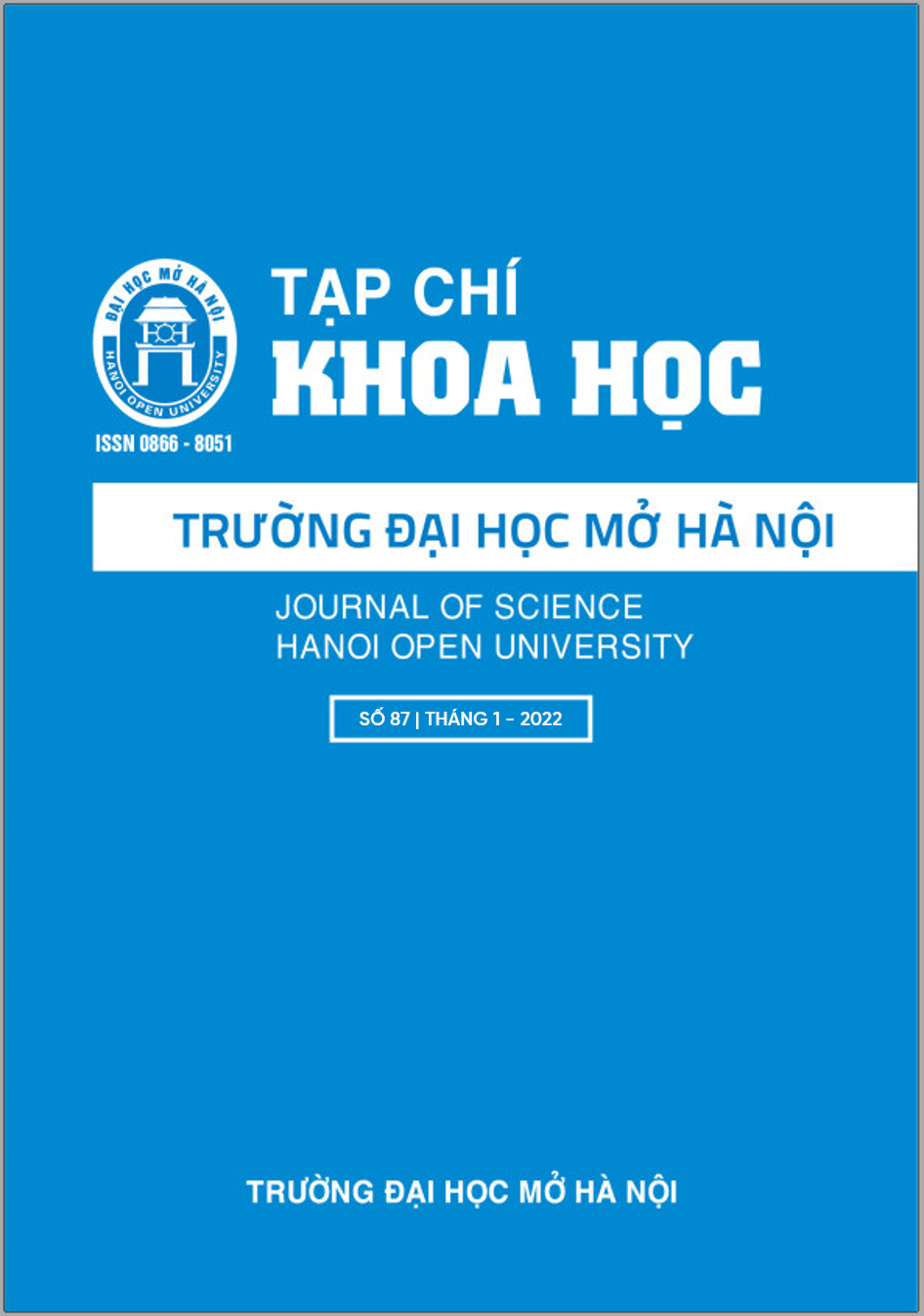STRATEGIES TO IMPROVE LEARNER AUTONOMY IN ENGLISH LISTENING SKILLS FOR FIRST-YEAR ENGLISH MAJORS AT HANOI OPEN UNIVERSITY
Keywords:
learner autonomy, autonomous learners, listening learning strategies, favorable learning environmentAbstract
Learner autonomy in learning English listening skills has been increasingly developed and explored in the world. This study aims at investigating first-year English majored students’ perceptions of learner autonomy and their practices in learning English listening skills at Faculty of English, Hanoi Open University. A questionnaire survey was employed to gather the data for the study. The structured questionnaire was administered to 85 participants from class K28X,Y,Z,V. The results of the survey revealed that almost students were aware of the importance of learner autonomy and the difficulties in learning and self- studying English listening skills. In addition, the results also indicate that the students really want to improve their autonomous learning. Therefore, teachers should make learners independent in their learning process. Besides, teachers should create favorable learning environment and effective strategies to facilitate learner autonomy in learning English listening skills and motivate them to be smartly autonomous learners.
References
[1]. Benson, P. P., editor (1997). Autonomy and independence in language learning. Longman, London.
[2]. Brown, H.D. (2001): Teaching by Principles: An Interactive Approach to Language Pedagogy, New York: Longman, 2’nd Edition.
[3]. Dam, L., 2011. Developing learner autonomy with school kids: principles, practices, results. In: D. Gardner (Eds.), Fostering autonomy in language learning. Gaziantep: Zirve University
[4]. David L. Vannette (2014) Questionnaire Design: Theory and Best Practices. Stanford University- Institute for Research in the Social Sciences Computational Social Science. Workshop September 15th, 2014
[5]. Fathali, S. and Okada, T. (2016). On the importance of out-of-class language learning environments: A case of a web- based e-portfolio system enhancing reading proficiency. International Journal on Studies in English Language and Literature, 4(8):77–85.
[6]. Gardner, D., and Miller, L. (1996). Tasks
for Independent Language. Learning: ERIC.
[7]. Herbert J. Walberg, Teaching speaking, listening and writing (IAE Educational Practices Series, 2004), 14.
[8]. Lai, C., and Gu, M. (2011). Self- regulated out-of-class language learning with technology. Computer Assisted Language Learning.
[9]. Little, D. (2001). Learner autonomy and second/foreign language learning. Retrieved from http://www.llas.ac.uk/resources/ gpg/1409 on November 23, 2011.
[10]. Mendelsohn, D., & Rubin, J. (Eds.). (1995). A guide for the teaching of second language listening. San Diego: Dominie Press
[11]. Orawiwatnakul, W. and Wichadee, S . (2017). An investigation of undergraduate students’ beliefs about autonomous language learning. International Journal of Instruction, 10(1).
[12]. Oxford, R L.; Lavine, R.Z., & Crookall,
D. (1989). Language learning strategies, the communicative approach, and their classroom implication. Foreign Language Annals, 22(2).
[13]. Rixon,S. (1986). Developing listening skills. London. Longman
[14]. Rost, M. (1990). Listening in language learning (pp. 150-174). London: Longman.
[15]. Rungwaraphong, P. (2012). Student readiness for learner autonomy: Case study at a university in thailand. Asian Journal on Education and Learning, 3(2):28–40.
[16]. Saris, W.E. and Gallhofer,I. (2007), Design, Evaluation and Analysis of Questionnaires for Survey Research, Wiley Interscience, Hoboken, NJ.
[17]. Shelagh, R (1986). Developing Listening Skills. Published by Macmillan.
[18]. Underwood, M. (1989). Teaching listening. New York: Longman Inc.
[19]. Underwood, M. (1994). Teaching listening. Longman Handbooks for Language Teachers.
[20]. Vandergrift, L. (1997). The comprehension strategies of second language (French) students: A descriptive study. Foreign Language Annals, 30,387-409.
[21]. Vandergrift, L. (2004). Learning to listen or listening to learn? Annual Review of Applied Linguistics, 24, 3-25.
[22]. Willis, J. (1981). Teaching English through English. London: Longman.
